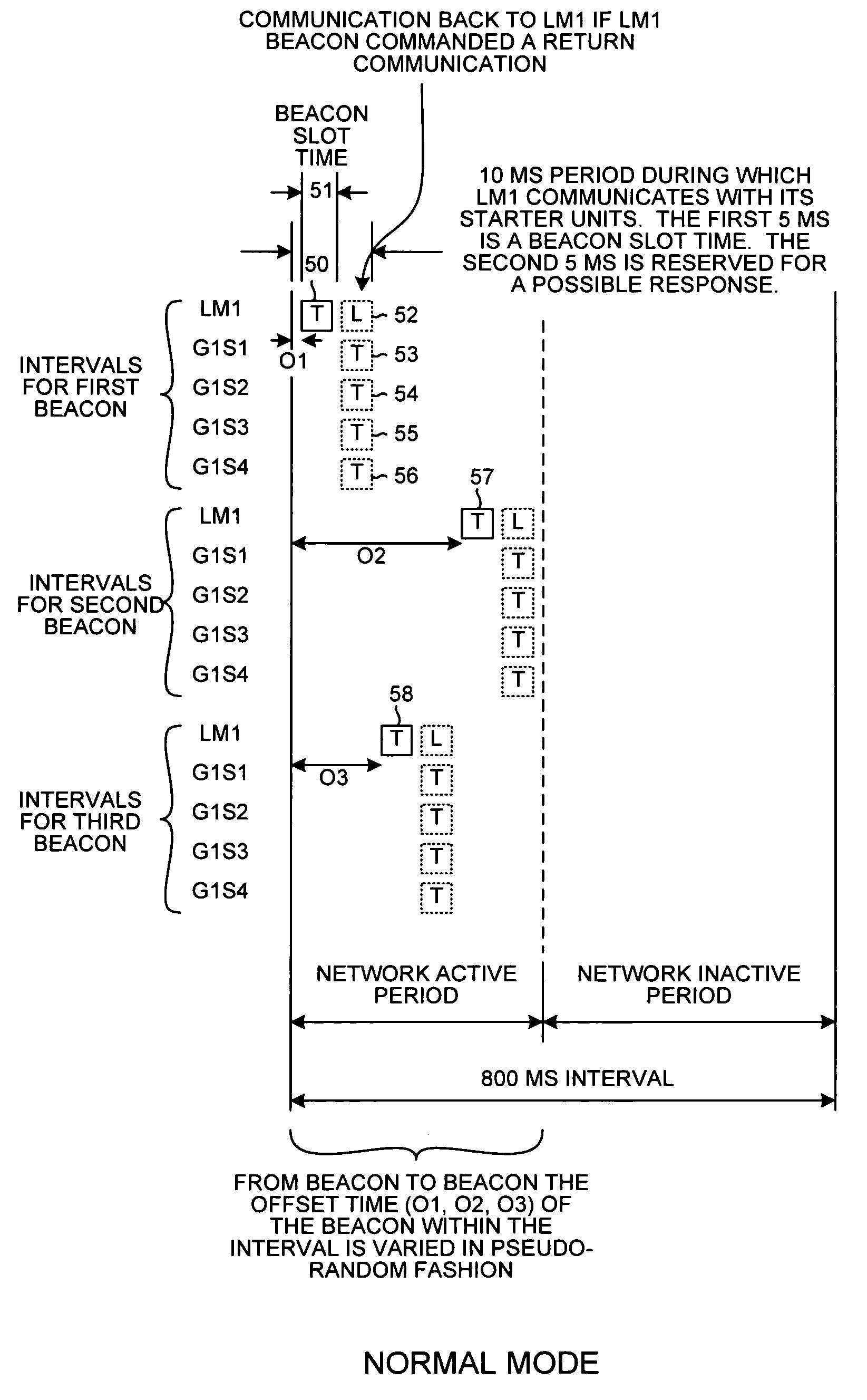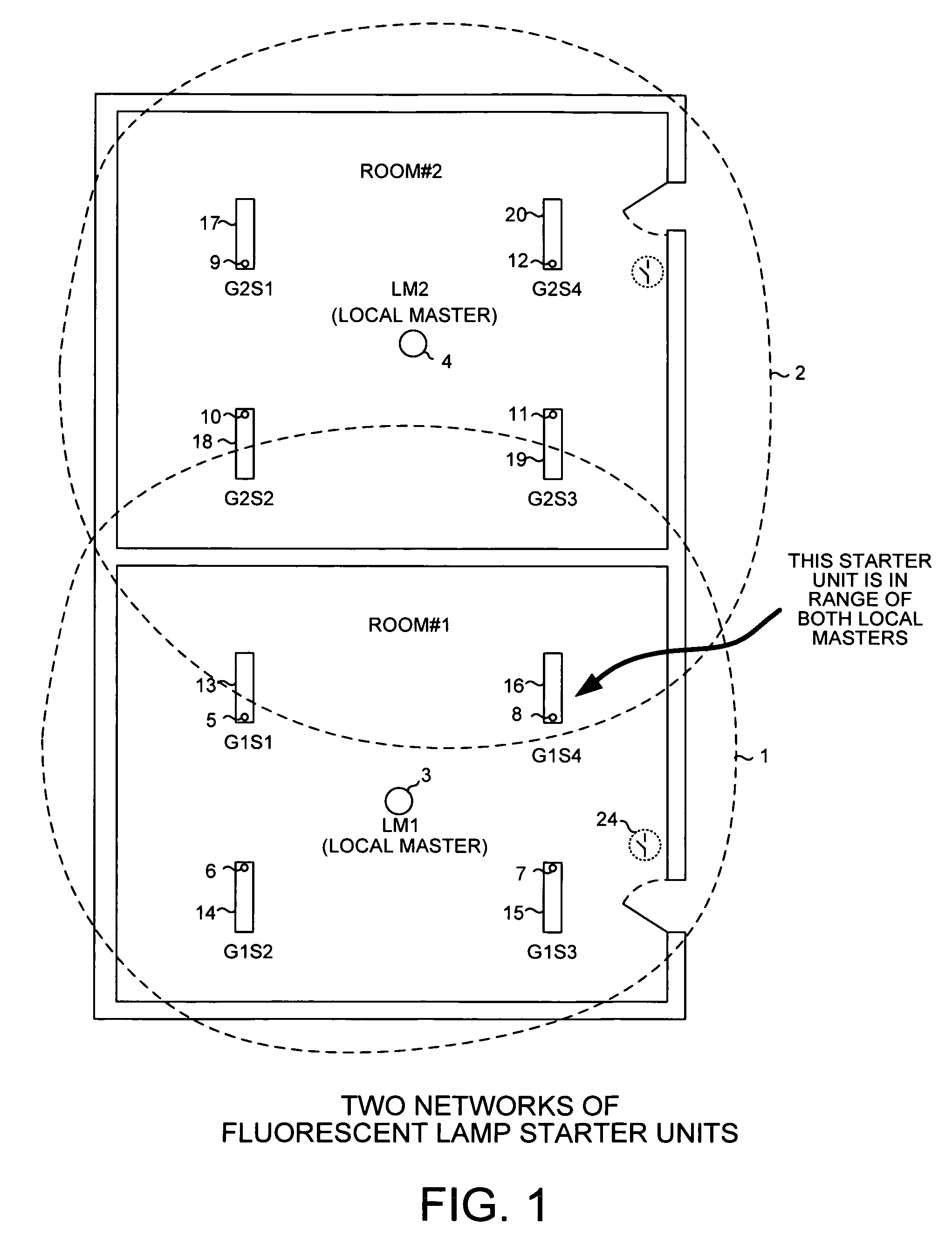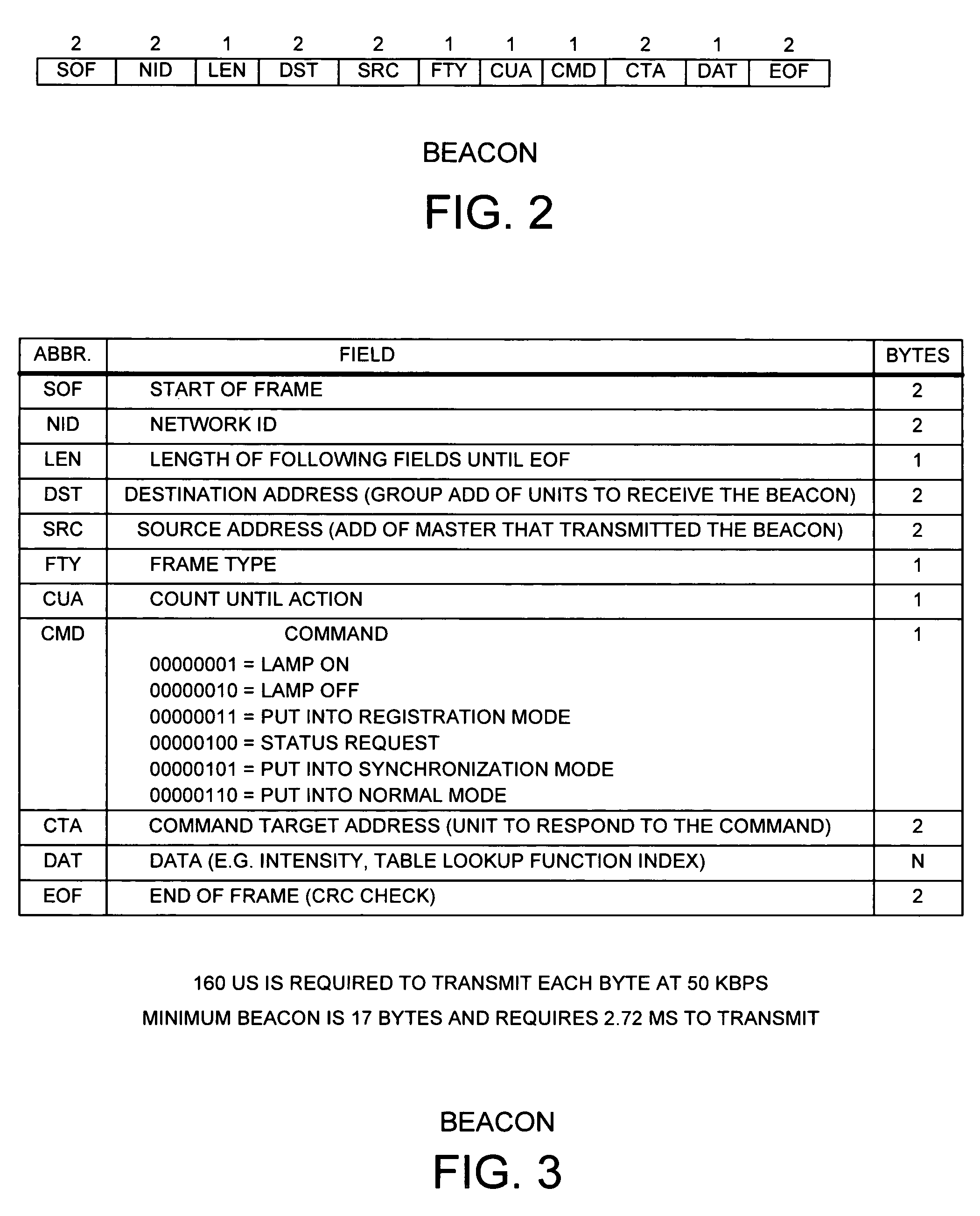Time-hopping low-power wireless network for turning off and on fluorescent lamps
a low-power wireless network and fluorescent lamp technology, applied in power management, transmission systems, sustainable buildings, etc., can solve the problems of large protocol overhead, large power consumption of the device overall, and substantial disadvantages of some lighting control applications, so as to reduce the persistence of possible collisions and reduce latency.
- Summary
- Abstract
- Description
- Claims
- Application Information
AI Technical Summary
Benefits of technology
Problems solved by technology
Method used
Image
Examples
Embodiment Construction
[0023]Reference will now be made in detail to background examples and some embodiments of the invention, examples of which are illustrated in the accompanying drawings.
[0024]FIG. 1 is a diagram of two networks 1 and 2. Each network is a time-hopping wireless network involving a local master unit that is in Radio Frequency (RF) wireless communication with a plurality of remote lighting control units. Network 1 involves local master unit (LM1) 3 and four lighting control units (G1S1, G1S2, G1S3, G1S4) 5-8. Similarly, network 2 involves local master unit (LM2) 4 and four lighting control units (G2S1, G2S2, G2S3, G2S4) 9-12. In the illustrated example, each of the lighting control units is an RF-enabled replaceable fluorescent lamp starter unit that is plugged into an accommodating socket fluorescent lamp light fixture such that the starter unit can be controlled by its local master to turn on a lamp of the fixture and to turn off the lamp of the fixture. Starter unit 5 is plugged into ...
PUM
 Login to View More
Login to View More Abstract
Description
Claims
Application Information
 Login to View More
Login to View More - R&D
- Intellectual Property
- Life Sciences
- Materials
- Tech Scout
- Unparalleled Data Quality
- Higher Quality Content
- 60% Fewer Hallucinations
Browse by: Latest US Patents, China's latest patents, Technical Efficacy Thesaurus, Application Domain, Technology Topic, Popular Technical Reports.
© 2025 PatSnap. All rights reserved.Legal|Privacy policy|Modern Slavery Act Transparency Statement|Sitemap|About US| Contact US: help@patsnap.com



